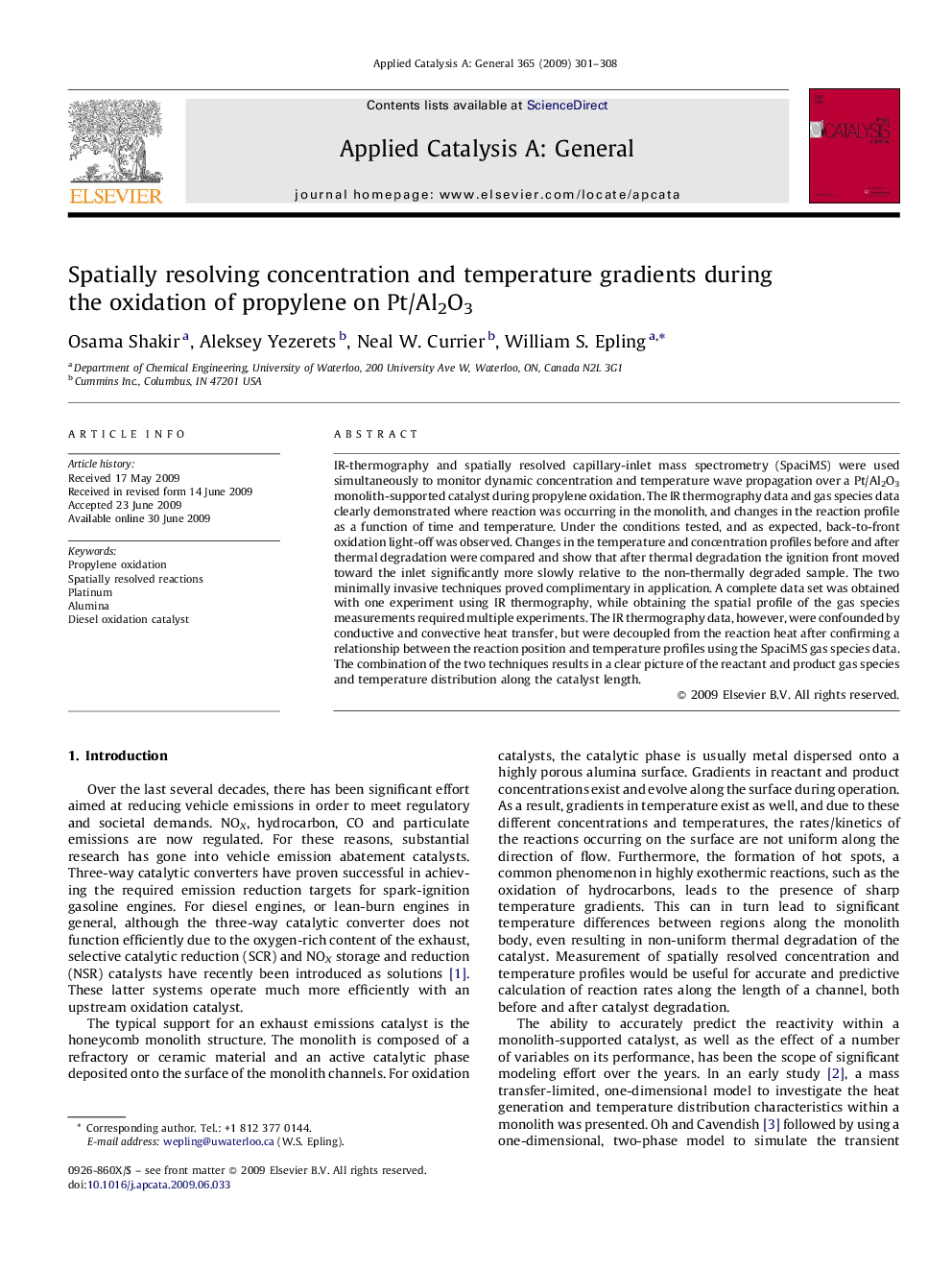| Article ID | Journal | Published Year | Pages | File Type |
|---|---|---|---|---|
| 42579 | Applied Catalysis A: General | 2009 | 8 Pages |
IR-thermography and spatially resolved capillary-inlet mass spectrometry (SpaciMS) were used simultaneously to monitor dynamic concentration and temperature wave propagation over a Pt/Al2O3 monolith-supported catalyst during propylene oxidation. The IR thermography data and gas species data clearly demonstrated where reaction was occurring in the monolith, and changes in the reaction profile as a function of time and temperature. Under the conditions tested, and as expected, back-to-front oxidation light-off was observed. Changes in the temperature and concentration profiles before and after thermal degradation were compared and show that after thermal degradation the ignition front moved toward the inlet significantly more slowly relative to the non-thermally degraded sample. The two minimally invasive techniques proved complimentary in application. A complete data set was obtained with one experiment using IR thermography, while obtaining the spatial profile of the gas species measurements required multiple experiments. The IR thermography data, however, were confounded by conductive and convective heat transfer, but were decoupled from the reaction heat after confirming a relationship between the reaction position and temperature profiles using the SpaciMS gas species data. The combination of the two techniques results in a clear picture of the reactant and product gas species and temperature distribution along the catalyst length.
Graphical abstractIR-thermography and SpaciMS were used to evaluate temperature and gas species concentration values over a Pt/Al2O3 monolith-supported catalyst during propylene oxidation before and after thermal degradation. The distribution of temperature across the monolith and the gradients in gas-species concentrations in a channel during reaction was clearly resolved using the combination of the two minimally invasive techniques, providing a clearer understanding of reaction evolution along the monolith.Figure optionsDownload full-size imageDownload as PowerPoint slide
